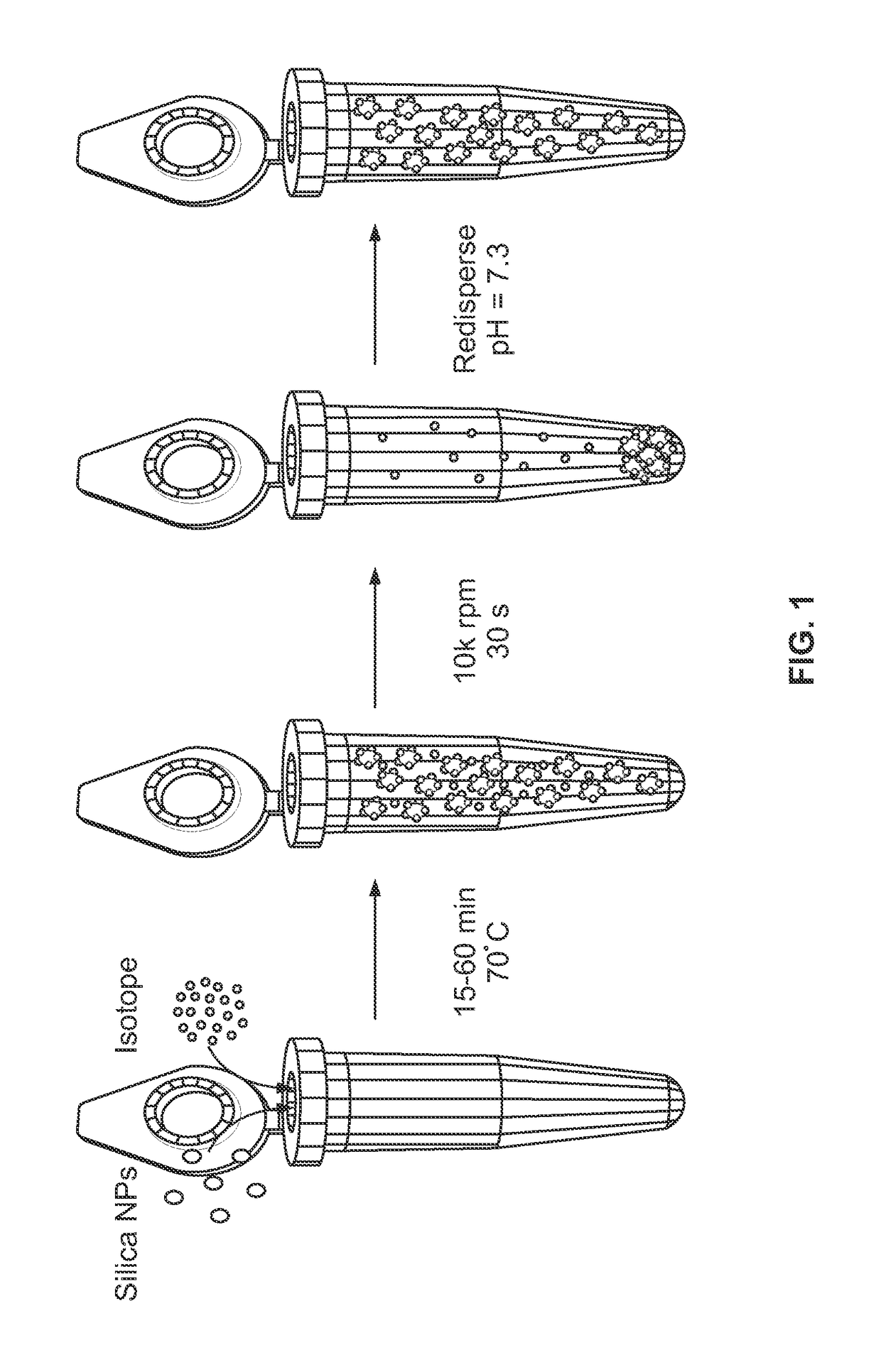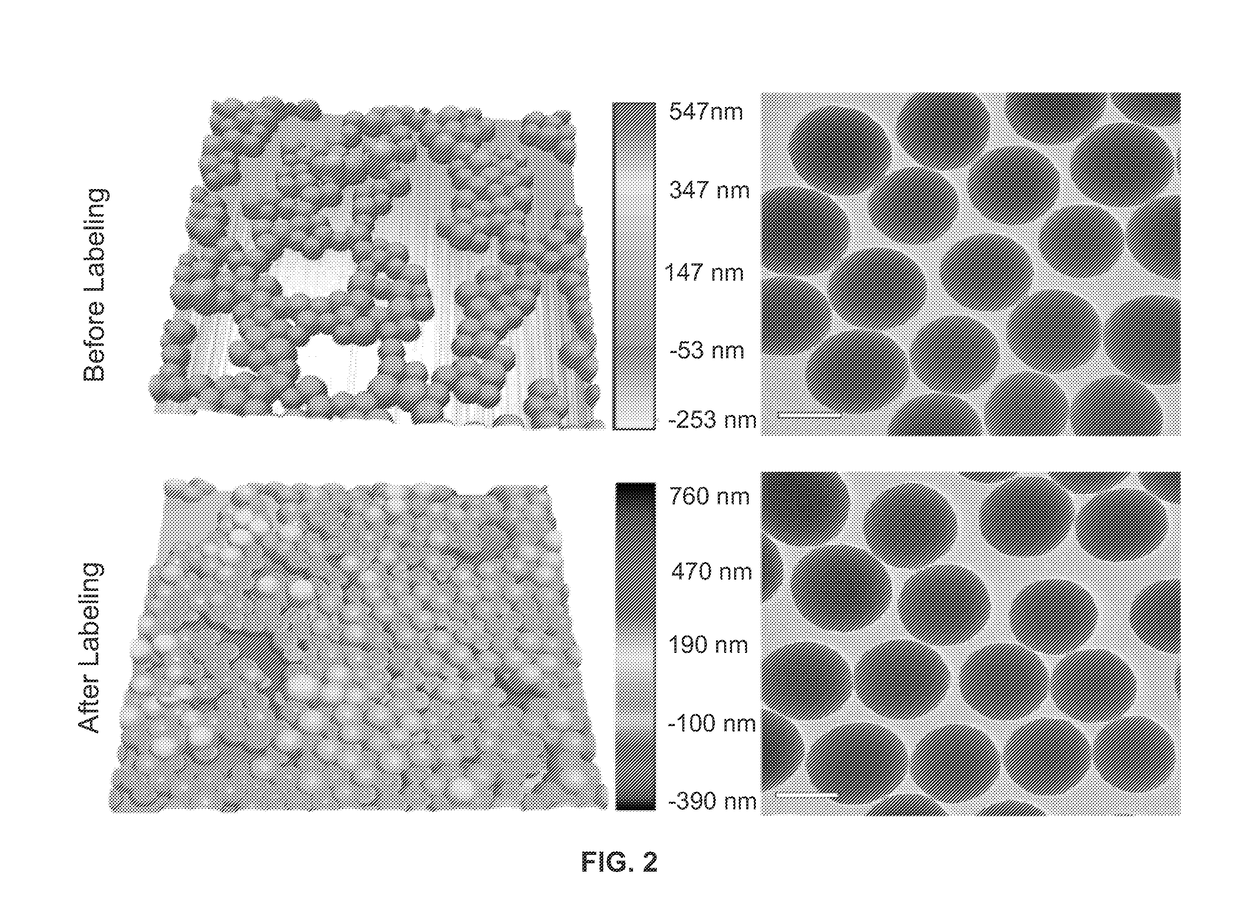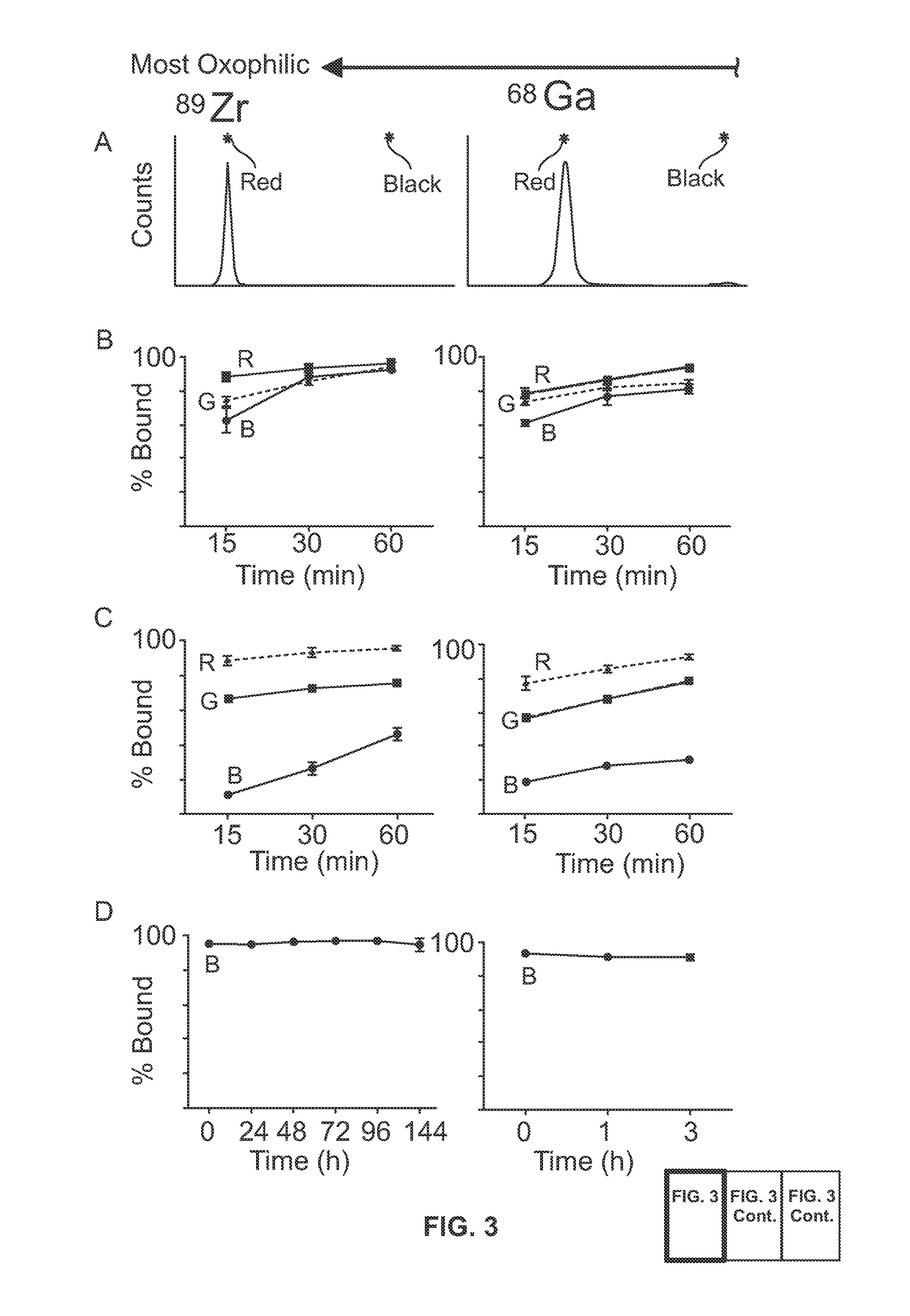Metal(LOID) chalcogen nanoparticles as universal binders for medical isotopes
a technology of chalcogen nanoparticles and chalcogen nanoparticles, which is applied in the field of medical isotopes, can solve the problems of specificity problems of conventional molecular chelators, and achieve the effects of high radiochemical yield, broad applicability, and excellent in vivo stability and efficacy in lymph node tracking
- Summary
- Abstract
- Description
- Claims
- Application Information
AI Technical Summary
Benefits of technology
Problems solved by technology
Method used
Image
Examples
example 1
of Labeled Silica Nanoparticles
[0177]Those of ordinary skill in the art, reading the present disclosure, will immediately appreciate that metal(loid) chalcogen nanoparticles can be synthesized by a variety of methods. Without wishing to be bound to a specific synthesis procedure, the silica nanoparticles used in Example 1 were produced via a modified Stober reaction. In brief, microporous 120 nm silica nanoparticles were synthesized by reacting 1.25 ml tetraethyl orthosilicate, 625 μL 28% ammonium hydroxide, and 3.75 ml of ultrapure water in 25 ml ethanol for 50-60 minutes at ambient conditions.
[0178]The hydrodynamic diameter of the silica nanoparticles pre- and post-labeling were determined through DLS (Nano-ZS, Malvern, Westborough, Mass.). The same instrument was used in nanoparticle surface charge measurement (ζ potential) in ultrapure water (>18.2 MΩ cm−1 at 25° C., Milli-Q, Millipore, Billerica, Mass.). To determine silica nanoparticle concentration, an NS500 instrument was ut...
example 2
Protocol for Synthesis of Chelator-Free PET-SE(R)RS Nanoparticles
SERRS Nanoparticle Synthesis
[0213]Gold nanoparticle cores were synthesized by adding 1.5 ml of 1 weight % sodium citrate to 200 mL of boiling 0.01 weight % aqueous HAuCl4. The nanoparticle cores were collected by centrifugation (10 min, 4000 g, 4° C.) and dialyzed (3.5 kDa molecular weight cutoff; Slide-A-Lyzer G2, Thermo Fisher Scientific Inc.) against 18.2-megohm-cm water. Dialyzed gold nanoparticles (˜55 nm) were directly coated with dye-embedded silica via a modified Stober method without the need for surface priming. In brief, 1.0 ml of 3.0 nM gold nanoparticles in water was added to 8.5 ml of ethanol to which 15 ml of 25 mM resonant dye molecule (e.g., IR-780 perchlorate) in DMF, 320 ml of tetraethyl orthosilicate (TEOS), and 130 ml of 28% ammonium hydroxide were added and allowed to react for 25 min. The as-synthesized SE(R)RS nanoparticles were isolated by centrifugation (3500 g, 10 minutes) and washed several ...
PUM
 Login to View More
Login to View More Abstract
Description
Claims
Application Information
 Login to View More
Login to View More - R&D
- Intellectual Property
- Life Sciences
- Materials
- Tech Scout
- Unparalleled Data Quality
- Higher Quality Content
- 60% Fewer Hallucinations
Browse by: Latest US Patents, China's latest patents, Technical Efficacy Thesaurus, Application Domain, Technology Topic, Popular Technical Reports.
© 2025 PatSnap. All rights reserved.Legal|Privacy policy|Modern Slavery Act Transparency Statement|Sitemap|About US| Contact US: help@patsnap.com



